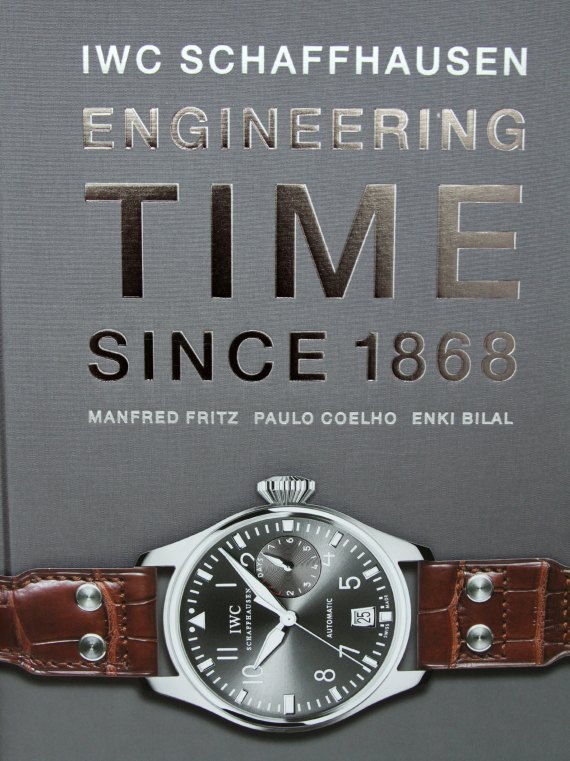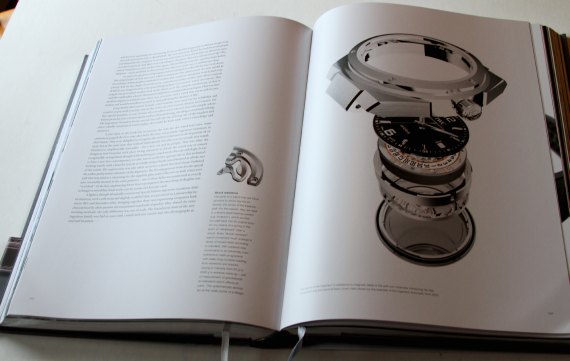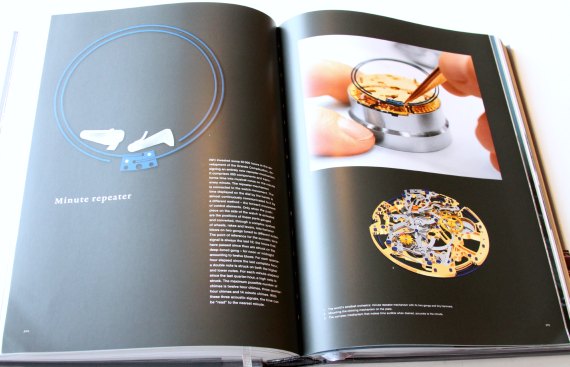
I did a survey on Luxist within the last year that was a survey of the “best” luxury watch brands according to the site’s readers who participated in the poll. I had to choose five brands, and among those was IWC. With a strong, focused product line, and an emphasis on performance and gentlemen’s sport activity, I felt that the brand resonated particularly well with American audiences. While such polls aren’t hard science, the result was that Luxist readers felt that IWC was the best luxury watch brand. Beating the likes of others such as Rolex, Patek Philippe, and Audemars Piguet.
IWC was obviously on my radar before the results of that poll, but it was a fascinating look into the perception of (mostly American) luxury blog readers. One of your fellow aBlogtoRead.com readers recently commented on an IWC related article that IWC watches are well-made, nicely designed, but over-priced. A quick response via another fellow reader indicated a wise observation. If a brand is doing well, selling its products, and experiencing high demand, the amount it asks for its products isn’t too high — especially if it is getting that amount. That sort of halted the topic, and I thought it was a good message about the luxury industry overall. Luxury goods are easy to attack. It is easy to complain about price, image, and snobbiness. What is more impressive is when luxury brands are defended. Such conduct shows that the price, image, and possible snobbiness don’t actually result in bad sentiment – in that particular case. I’m making a general statement about the luxury industry and many different types of products, but in the context of IWC, it interesting to see fans ‘ring in’ to communicate their own personal high-view of the brand and what they sell.


IWC has a really interesting history, and I won’t try to sum it up here. The brand was actually started by an American, and occurred at the time when Swiss labor was actually cheaper than American labor — at least this is my understanding. Since that time (a long time ago), the brand has transformed a lot, and currently under Richemont Group ownership, thrives as one of the most well-respected luxury watch brands around. The exact details of when the brand started to current day IWC apparently were unknown to any one person. So IWC decided to put together a book to document its history. Which is what this new (and massive) IWC book is all about – and it is called “IWC: Engineering Time Since 1868.”
The synthesis of this new book is actually really interesting, and kind of unusual. Most books are created with very specific purposes in mind — to sell copies, and make money. This book is a little different. While IWC of course wants to sell as many copies as possible, the book has other value. First, I think that IWC simply wanted to have a good grasp on its own history. I don’t know whose idea it was to make the book, but CEO George Kern but the ball in motion a while ago to chronicle the history and story of IWC. In cooperation of current and former IWC employees, as well as many historical documents, the task was given to German writer and journalist Manfred Fritz. It took him a few years to finish the job, but the result was a quite competent collection of the history and activities that made up the International Watch Company. The book would serve as a base, for while all future brand history could be added to. The value to Kern was that IWC could finally have a detailed and relatively precise authority on its history, values, and tradition. A very Germanic thing to do yes, but IWC is located in Schaffhausen which is quite close to Germany, and in the German speaking part of Switzerland.

European watch buyers value something that American watch buyers (and this sort of applies to general consumer mentalities overall) aren’t as focused on. It is the concept of history and tradition. A company that is old, and had been around for a long time is given a lot of instant credibility. European consumers looking for watches seem often times to be weary of new products and companies that haven’t yet proven themselves. This of course doesn’t apply to everyone, but overall the sentiment seems to hold true. For that reason, IWC felt it was a good idea from a branding standpoint to show existing and potential customers that it has an impressive looking, hefty 25 pound book filled with history. So it isn’t that everyone who might become interested with IWC is going to buy the book and read it cover to back — but rather that they could if they wanted to, and will at least have it to flip through while hanging out at IWC boutiques. The book should also be available at traditional book retailers as well, for those who discover it, and find interest in the brand or the watches.
With a notable and respected third-party author, as well as a grand tale to tell, the IWC book served most of its purposes relatively well. But that alone wouldn’t get it a ton of attention outside the world of watch lovers and IWC aficionados. So IWC decided that it wanted to sex things up a bit, so that their new investment would get noticed by even more people, and further entice people to check it out that might not otherwise.

If IWC asked me how to do this, I don’t think they would have liked my answer. I probably would have told them to insert a lot of tasteful nudes — where ‘calendar girl’ style women would pose minus wardrobes, brandishing an assortment of fine IWC watches. I don’t know about you, but I would have picked up the book to check that out. Unfortunately, IWC likely would have wanted to take a more prudent route and not risk offending its more conservative clients. Oh, well. Perhaps another brand will use my idea.
The plan to jazz up the book took time to develop. After a lot of ideas and matters of practically were addressed, the final result was to make a book within a book. What is a book within a book? Call it an intermission. There is literally another book inside of the massive book. It even feels different. The sandwiched literature isn’t really about watches — but more about how IWC products and personality can influence story telling. IWC was able to convince well-known, high-selling Brazilian author (of books such as The Alchemist) Paulo Coehlo to pen the book within the book. Because the rest of the book was filled to the brim with imagery, so should Paulo’s text. So IWC enlisted French artist and cartoonist Enki Bilal for the task. While not known too well in the US, Enki is a talented artist, and has some animated movies under his belt.

No matter the result, IWC would have three big names to slap on the front of its book — which alone would have been pretty brag-worthy for them. What impresses me is that it all came together pretty well.
For the unveiling of the book, I visited IWC’s headquarters and manufacture in Schaffhausen. The sleepy Swiss town (well most Swiss towns are quiet) is typical of the village style burghs that watch makers like to call home. While the manufacture is extremely modern, vestiges of a medieval past are all around. With smoke pluming chimneys on story-book style homes, to a castle topped mountain, the view from the factory is conducive to practicing the history rich art of watch making.

The unveiling event included the three men responsible for the content in the book. Though in reality, IWC as a whole deserves a pat on the back for getting the book done. Manfred, Paulo, and Enki are three totally different types of men, and IWC likely has some amusing stories involving the trio collaborating on the book. In fact, the event itself was the first time that the three men ever met each other. Prior to that, all the work was done remotely and via IWC as a conduit. The German, the Frenchman, and the Brazilian each added something interesting to the history book, above and beyond what IWC would have created if it was an entirely in-house effort.
OK, so enough about the making of the book, is it worth checking out? That is a good question, because it isn’t exactly cheap. While you get a beautiful, useful, and heavy tome, the IWC history book costs about 250 Swiss Francs. To be honest I was skeptical at first. It is easy to put in a ton of pictures, and dress up text with glossy pages and a fancy publishing job. That isn’t the case here. What impressed me most about the book was the organization. Each major watch collection has its own section. So let’s say you are interested in the Aquatimer. IWC dive watches have an entire section complete with history, technology, and a review of many models — both modern and historic. It gives people a way to feel much more connected to watches they may have, as well as learn about potential collections they are interested in.

It goes without saying that the book features a proper history and timeline of IWC, its major players, and the events and successes it has had. Manfred fulfills his role as a journalist making the information clear and useful. The book isn’t merely reams of paragraphs that feel like marketing copy to praise IWC for each moment of its existence.
Some of the things I really like are discussions about unique technology IWC has used or developed, images of classic IWC advertisements, famous relationships and watches produced, as well as an intimate understanding of what interests not only a watch lover, but also history buffs.
How about the book within the book? Well Enki’s illustrations each have some IWC imagery in them, and serve to compliment the short stories they accompany. Paulo provides several short stories — which offer a glimpse of what he sees the IWC lifestyle to be like, done of course in the style he is famous for. Paulo needed to get his mind about luxury watches as well as IWC’s particular history and product offering before embarking on this project. I believe this is the only commissioned work that he has ever done, which speaks well to the persuasive power of IWC (and perhaps Mr. Kern).


There aren’t likely to be that many people who read IWC’s history book in its entirety. It isn’t that type of book. It is meant to be a large coffee table sized publication meant for perusal and short stints of reading. Each time you sit down with it, you can open up a different section, and see if there are items you want to explore further. Pages aren’t cluttered with text, and only a few sections have long portions of text without a break. The book even has two book-mark strings — assuming you might be looking at more than one section at a time.
From an aesthetic standpoint, the book is lovely, and like I said, all the images are welcome and useful. It helps bring the beauty, purpose, and history of IWC watches appreciatively to life. The reason I discussed the organization and content of the book first, is to help separate from coffee tables books that are meant to be viewed only. But between sessions of checking it out, the book will not only look nice sitting around the house, but prove interesting to most people who flip through it. As an added bonus, the size and weight of the book provide that if needed, it can be used as a weapon in self defense (if you can manage to swing it about). A solid strike to the solar plexus should find most opponents stunned and on the ground. Of course I (and most certainly IWC), recommend the book for reading purposes only.
No doubt IWC will update the book every so often when new things come out, but the core history will remain. The significant investment in the book was a reasonable endeavor for them, and as I discussed above, the book has a number of important uses for IWC. For you, it is worthwhile to pick up if you are an existing IWC fan, want to know more about the brand, or are just interested in the last century of watch making (as there aren’t too many books or resources that offer as attractive a package to get such information). Priced in the US at $250, and available from IWC and major book retailers.
